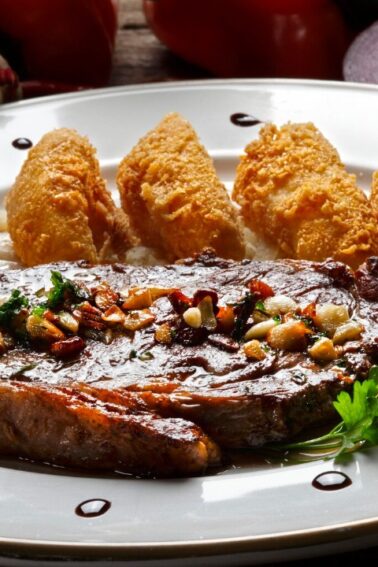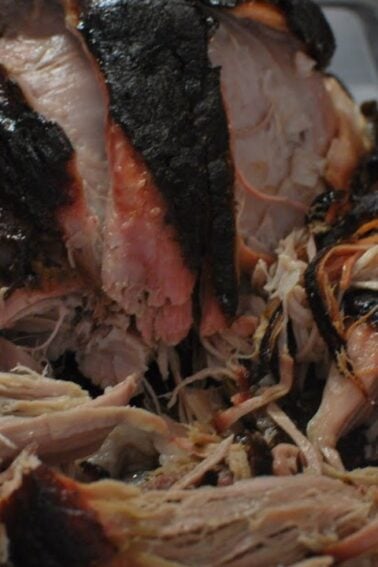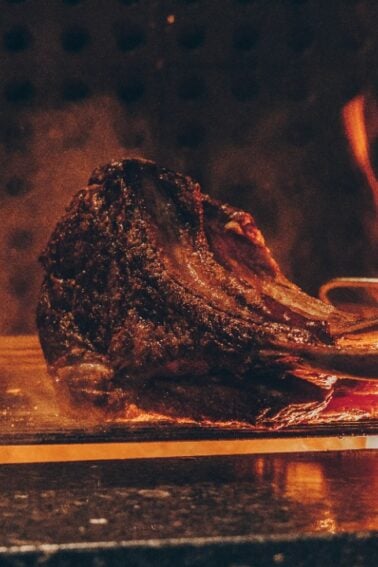Delving into the world of ‘nose-to-tail’ eating is an exploration of culinary traditions, environmental sustainability, and an appreciation for the whole animal. This practice, which encourages the use of every part of an animal from nose to tail, places a particular emphasis on offal. Offal, the collective term for an animal’s internal organs and entrails, is often overlooked despite its rich history, cultural significance, and nutritional value. This guide will take you on a journey through the fascinating world of offal, from understanding its origins to preparing and cooking it at home.
Understanding the Nose-to-Tail Philosophy

The nose-to-tail movement has its roots in frugality and respect for the animal. In times past, when an animal was slaughtered, nothing was wasted. Every part, from the nose to the tail, was used. This philosophy promotes not only economic efficiency but also environmental sustainability. Using every part of the animal reduces waste and respects the life of the animal by ensuring nothing is thrown away.
Moreover, the nose-to-tail philosophy also has significant environmental benefits. The meat industry has a substantial environmental footprint, and by consuming the entire animal, we can reduce this impact. Utilizing all parts of the animal, including the offal, decreases the demand for more animals to be raised and slaughtered. This can help reduce greenhouse gas emissions and our overall environmental impact.
What is Offal?

Offal refers to the internal organs and entrails of an animal. This includes, but is not limited to, the heart, liver, kidneys, brain, tongue, and tripe. It’s important to note that the term ‘offal’ also extends to other parts of the animal that are not muscle meat, like the feet, head, and tail.
There are many misconceptions about offal, the most common being that it’s low-quality or inferior to muscle meat. This couldn’t be further from the truth. Offal is not a by-product or waste, but a prized component in many cuisines around the world. It’s often more flavorful than muscle meat and is packed with essential nutrients.
The Cultural Significance of Offal

Offal has a significant place in many cultures and cuisines worldwide. In France, foie gras (duck or goose liver) is a delicacy, while in Spain, callos (tripe stew) is a traditional dish. Italy is famous for its osso buco (braised veal shanks), and Scotland for its haggis (a pudding containing sheep’s heart, liver, and lungs).
In Asian cuisines, offal is also widely used. In China, for instance, chicken gizzards are commonly stir-fried, and duck blood is used in soups. Filipino cuisine features dishes like dinuguan, a stew made from pig’s blood, and paklay, a dish made with goat or pig innards. These examples illustrate the integral role of offal in traditional dishes, highlighting its cultural importance.
Nutritional Values of Offal

Offal is a nutritional powerhouse. Compared to muscle meats, offal tends to be richer in essential nutrients. For instance, liver is a fantastic source of vitamin A, iron, and B vitamins. Heart, on the other hand, is rich in CoQ10, a compound that helps generate energy in your cells.
However, while offal is nutrient-dense, it’s also important to be aware of potential risks. Some types of offal, like liver, are high in certain nutrients such as vitamin A, which can be harmful in excess. As with all foods, moderation and a balanced diet are key.
Selecting and Storing Offal

When it comes to selecting offal, freshness is paramount. Look for offal that is bright and shiny, with a firm texture. It should not have a strong or unpleasant odor. For offal like liver and heart, choose ones that are dark in color, as this usually indicates high quality.
Proper storage is also crucial to maintain freshness and prevent spoilage. Offal should be stored at the bottom of the fridge, ideally at a temperature of 39°F or colder. It’s best to consume offal as soon as possible after purchase, but if that’s not feasible, most types of offal can be frozen for up to three months.
Preparing Offal for Cooking

Before cooking offal, proper preparation is essential. This can include steps like rinsing, soaking in milk or brine, and removing any membranes or connective tissue. These steps can help reduce the strong flavors often associated with offal.
For example, soaking liver in milk can help to neutralize its strong flavor and tenderize the meat. Kidneys can be soaked in brine to remove any residual urine flavor. By taking the time to prepare offal properly, you can ensure the best possible flavor and texture in your dishes.
Cooking Offal: Popular Methods and Recipes

Cooking offal requires a different approach than cooking muscle meats. Some types of offal, like liver and kidneys, are best when cooked quickly over high heat. Others, like tripe and heart, benefit from slow, low-heat cooking methods to tenderize the meat.
There are countless recipes that showcase offal. For example, the French dish pâté de foie gras features rich and creamy goose liver, while the Italian trippa alla Romana is a hearty stew made with tripe. If you’re feeling adventurous, you could even try making Scottish haggis or Filipino dinuguan at home.
Pairing Offal with Wines and Sides

Just as with any other type of meat, offal can be beautifully complemented by the right wine and side dishes. Rich, full-bodied red wines like Cabernet Sauvignon or Zinfandel can stand up to the strong flavors of liver or heart. For lighter offal dishes, a crisp white wine like Sauvignon Blanc may be a better match.
As for side dishes, consider ones that can balance out the flavors of the offal. For example, a creamy mashed potato or a simple green salad can provide a nice contrast to the richness of offal. Root vegetables roasted with herbs and spices are also a great pairing for many offal dishes.
Embracing Offal: Overcoming the ‘Yuck’ Factor

Eating offal can be a psychological challenge for some due to preconceived notions about its taste or texture. However, with an open mind and adventurous spirit, you can learn to appreciate its unique qualities. Start with milder offal like liver or heart, and gradually work your way up to more adventurous options like brain or tripe. Remember, offal is a regular part of many cuisines around the world – there’s a reason for its enduring popularity!
Ultimately, embracing offal is about embracing the nose-to-tail philosophy: respecting the animal by making use of every part, reducing waste, and exploring diverse culinary traditions. With this guide, you’re well on your way to discovering the joys of offal, from its rich cultural significance to its nutritional value and unique, delicious flavors.
Hungry for more? Subscribe to our newsletter and become part of the world’s best meat community! From grilling tips to smoky secrets, we send you the best recipes, guides, and expert advice to master every cut.













